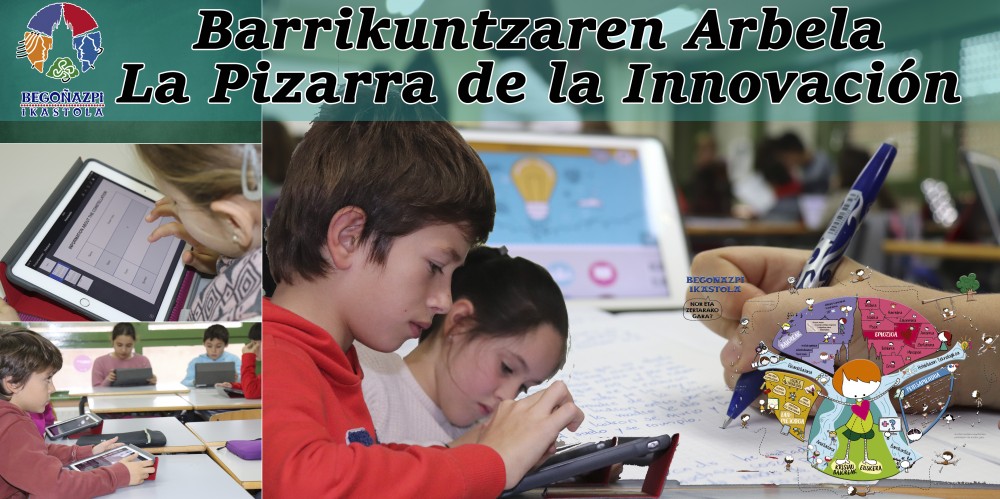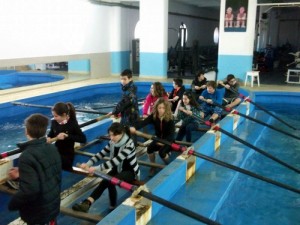1.- The Challenge:
Not all students are the same. There are those who have more learning capacity to understand mathematics, learn languages, to express themselves and so on. And there are those who have a better or worse attitude towards their studies, or those who face other types of problems –dyslexia, hyperactivity, dyscalculia (mathematical learning difficulties) and so forth. The cause is as varied as the number of students.
Up until there, we are all in agreement, yet how should an educational center react upon this kind of problem? The law states that all students have the same number of classroom hours and everything which remains outside these classroom hours is left at the expense of families, who seek the solution to reinforce their children’s learning during these private lessons.
2.- Internal solution:
Nonetheless, Begoñazpi Ikastola has decided to face the problem from within and provide those students who need it with the necessary
tools so as to improve their results. “It is our commitment with our students and our families; if a family chooses to do something on their own, perfect, yet we do not tell them to find their own solution, yet we tell them that their child will receive help from their center,” states Merkat Bernaola, Secondary and Upper Secondary Head of Studies.
And how do we help them? Begoñazpi Ikastola has found two main solutions: on the one hand, reinforce learning in those subjects in which a student is facing difficulties and on the other hand, students will learn how to study and learn. All of this takes place by means of an array of projects.
3.- Academic reinforcement.
For five years, the Ikastola has been working on an ample program – called “Anitz,” which to sum up, deals with each student’s diversity and which greatly enhances his/her academic, emotional results as well as those regarding his/her attitude and school ambience.
The first step is to determine the group of students who should receive help, what type of help and in which subjects. The process, which families have to know about at all times, determines a few extra classroom hours at which those students will receive private classes within the Ikastola with their own teachers.
Here, the Nire Ordua Project originates. It reinforces Secondary and Upper Secondary students’ learning. Three times a week – on Mondays, Wednesdays and Fridays, Secondary school students have an extra period per day so as to reinforce those subjects which they are experiencing difficulties in. Therefore, with these students, the number of classroom hours per week goes from 30 legal hours to that of 33. In Upper Secondary, this reinforcement is that of two hours per week, therefore they have 34 learning hours per week.
This way, while in the first cycle of Secondary, it is the teachers who determine the subject in which the student needs to receive help, in the second cycle, it is determined by a combination of student-teacher, and in Upper Secondary, it is the students themselves who decide which subjects they need extra help with.
4.- Working tools
That part, the most academic, has a practical reinforcement. Begoñazpi Ikastola endows its students with the necessary tools so as to develop a working method, a way to learn how to study. Consequently, once a week, these students attend a concrete workshop, which is divided into four models: learning and understanding techniques, thought routines and graphic organizing routines, from conceptual and mind maps to time lines with which to improve understanding and the learning of subjects since it is assumed that a student knows how to think and study, yet “that has to be learned and it has to be taught,” explains Bernaola.
This idea originates from the fact that each student has some qualities at his/her disposal which are more developed than others when having to face his/her studies. Some have a more visual memory, others a hearing one, others prefer to handle information and so forth. In short, each should classify information in the easiest way for him/her.
5.- Student involvement
Educational reinforcement at Begoñazpi also involves the student. Those students who are doing well in their studies become an active part of their colleagues’ reinforcement. This way, with the “Gidari” project, the second part of the Anitz program arises.
By means of this program, students –those who help and those who receive this support- meet up twice a week, during their leisure time to work on in the necessary subject-topics. Those who are doing well with their studies subsequently acquire a commitment which has previously been agreed upon within Begoñazpi’s educational community. On his/her behalf, the student who has received help feels the need to make an effort given that he/she is working with a colleague who is usually from the same grade and who gives up his/her own time to help him/her out.
6.- Results
As in all of Begoñazpi’s educational innovation processes, results make up an essential part. On the one hand, throughout the last five years, the center has seen how its students improve their academic results. The number of students who require a makeup exam has notably reduced. The same goes for those who have to redo a grade. Yet results go even further: the school ambience improves considerably, in addition to their attitude. The student makes a commitment and becomes involved in resolving his/her problems. On the other hand, the families see the Ikastola’s involvement at the time when their children mostly need it with great satisfaction.
7.- Material
The involvement with those students who most need it also entails the use of adapted material, in many cases, in order to resolve specific difficulties, anywhere from an array of learning difficulties, those of expression to specific problems such as dyslexia, dyscalculia, dysgraphia and so on. By means of an internal platform, the teaching staff has the necessary material so as to address each of these students at their disposal.
From Dalton Project to a comprehensive solution
Numerous European schools (Holland, Slovenia, Poland and the Czech Republic) are registered to the Dalton centers’ network, which base help toward students within the guidelines which were set by Helen Parkhurst (1886 – 1973), the creator of the Dalton Plan, in the US city where she is from. Beyond individualized help from which this plan stems, Begoñazpi has chosen to put a more ambitious project into action by offering a comprehensive solution and involving both teachers and students in this challenge. The results speak for themselves. So much that European Dalton centers have come to Begoñazpi on numerous occasions to get to know and pick up on the plan’s ideas which have been applied at the Ikastola.














Muy, muy interesante. Da gusto ver cómo se implica esta Ikastola en la educación de todos sus alumnos.
Buenas tardes;
Mi cuñada me ha enviado un enlace de vuestra página porque tiene a sus hijos estudiando en la Ikastola y he leido vuestro plan educativo para ayudar a alumnos que lo necesitan. Soy miembro del AMPA del colegio Esclavas SC-Fátima y me ha parecido muy interesante vuesto proyecto y su implantación.
Me gustaría que en nuestro colegio se tomasen iniciativas de esta naturaleza con estudiantes de secundaria y bachiller que tienen dificultades de aprendizaje por multiples razones. El ratio de fracaso en este colegio es bastante bajo pero hay casos de fracaso escolar de chavales que podrían tener exito y que se quedan por el camino. Creo que vuestros métodos son un buen sistema que permite obtener de los alumnos lo mejor de ellos mismos. Enhorabuena!!! continuad por ese camino. Hemos descubierto que no solo tenemos una inteligencia y que son multiples. Debemos aprender a potenciarlas para que el rendimiento y la autoestima de nuestros hijos sean optimos.
Flor Simón Pellanne
Muchísimas gracias por tu comentario y reflexiones Flor. Cualquier sugerencia, además, será bien recibida.